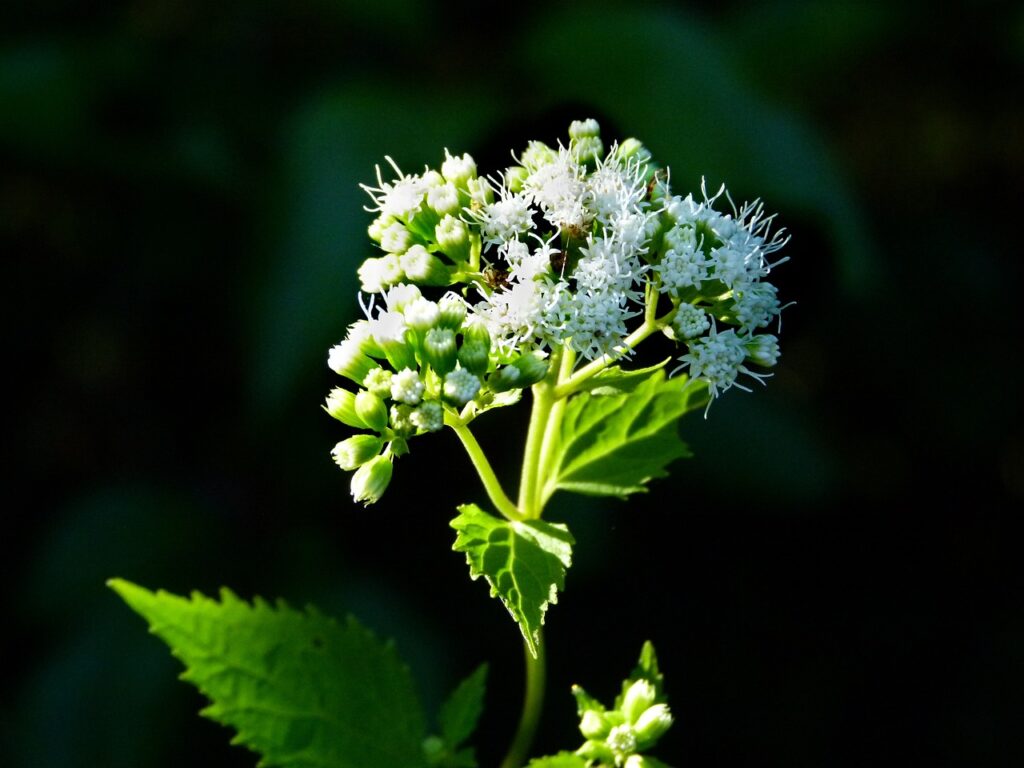The Mysterious White Snakeroot: Nature’s Misunderstood Plant
In the world of botanical wonders, few plants carry as much intrigue and misunderstanding as White Snakeroot. Often shrouded in local legends and whispered warnings, this native North American plant has a fascinating story that goes far beyond the myths surrounding it.
A Plant with Historical Significance

White Snakeroot, scientifically known as Ageratina altissima, is more than just another wildflower. Its history is deeply intertwined with early American settler experiences and Native American medicinal practices. While many local stories suggest it attracts snakes or brings misfortune, the plant’s true narrative is far more complex and scientifically interesting.
Botanical Characteristics
Standing elegantly between 2-4 feet tall, White Snakeroot produces delicate clusters of small white flowers that bloom in late summer and early fall. Its appearance is subtle yet striking – clusters of tiny white blossoms creating a soft, cloud-like effect against green foliage. The plant thrives in partially shaded woodland areas, particularly in the eastern United States.
The Dark Medical History
Perhaps the most significant chapter in White Snakeroot’s story is its role in “milk sickness” during the early 19th century. Settlers discovered, often tragically, that cattle grazing on this plant could produce milk containing a toxic compound called tremetol. This toxin could cause severe illness and even death in humans consuming the contaminated milk.Notably, this medical mystery claimed a famous victim – Nancy Hanks Lincoln, Abraham Lincoln’s mother, who died from milk sickness in 1818. This historical footnote transformed the plant from a simple woodland flower to a feared botanical entity.
Ecological Importance
Despite its controversial history, White Snakeroot plays a crucial role in local ecosystems:- Provides essential nectar for pollinators- Supports various moth and butterfly species- Helps prevent soil erosion in woodland areas- Creates habitat for small wildlife.
Myth busting the Snake Attraction Legend
Contrary to local folklore, there’s no scientific evidence suggesting White Snakeroot attracts snakes. These are likely cultural myths passed down through generations, lacking any botanical or zoological basis.
Growing and Managing White Snakeroot
For gardeners interested in native plant cultivation, White Snakeroot offers several advantages:- Low maintenance- Tolerates various soil conditions- Attractive to beneficial insects- Provides late-season garden interest.
Precautions for Gardeners
While beautiful, the plant can spread aggressively through underground rhizomes. Gardeners should:- Monitor its growth- Consider containment strategies- Avoid planting near livestock grazing areas- Wear gloves when handling.
Cultural Perspectives
Different communities have unique perspectives on White Snakeroot. Some view it as a dangerous plant to be avoided, while others appreciate its ecological contributions and historical significance.

Conclusion
White Snakeroot represents more than just a woodland flower. It’s a testament to the complex relationships between plants, humans, and ecosystems. Its story reminds us that nature is rarely as simple as local legends suggest.By understanding its true nature, we can appreciate White Snakeroot not as a mythical threat, but as a fascinating native plant with a rich and complex history.


Wonderful blog! I found it while searching on Yahoo News. Do you have any tips on how to get listed in Yahoo News? I’ve been trying for a while but I never seem to get there! Appreciate it
I discovered your blog site on google and check a few of your early posts. Continue to keep up the very good operate. I just additional up your RSS feed to my MSN News Reader. Seeking forward to reading more from you later on!…
I will right away grab your rss feed as I can not find your e-mail subscription link or newsletter service. Do you’ve any? Kindly let me know in order that I could subscribe. Thanks.